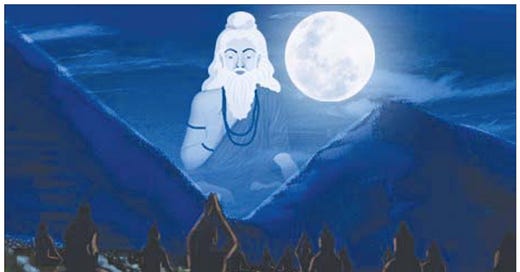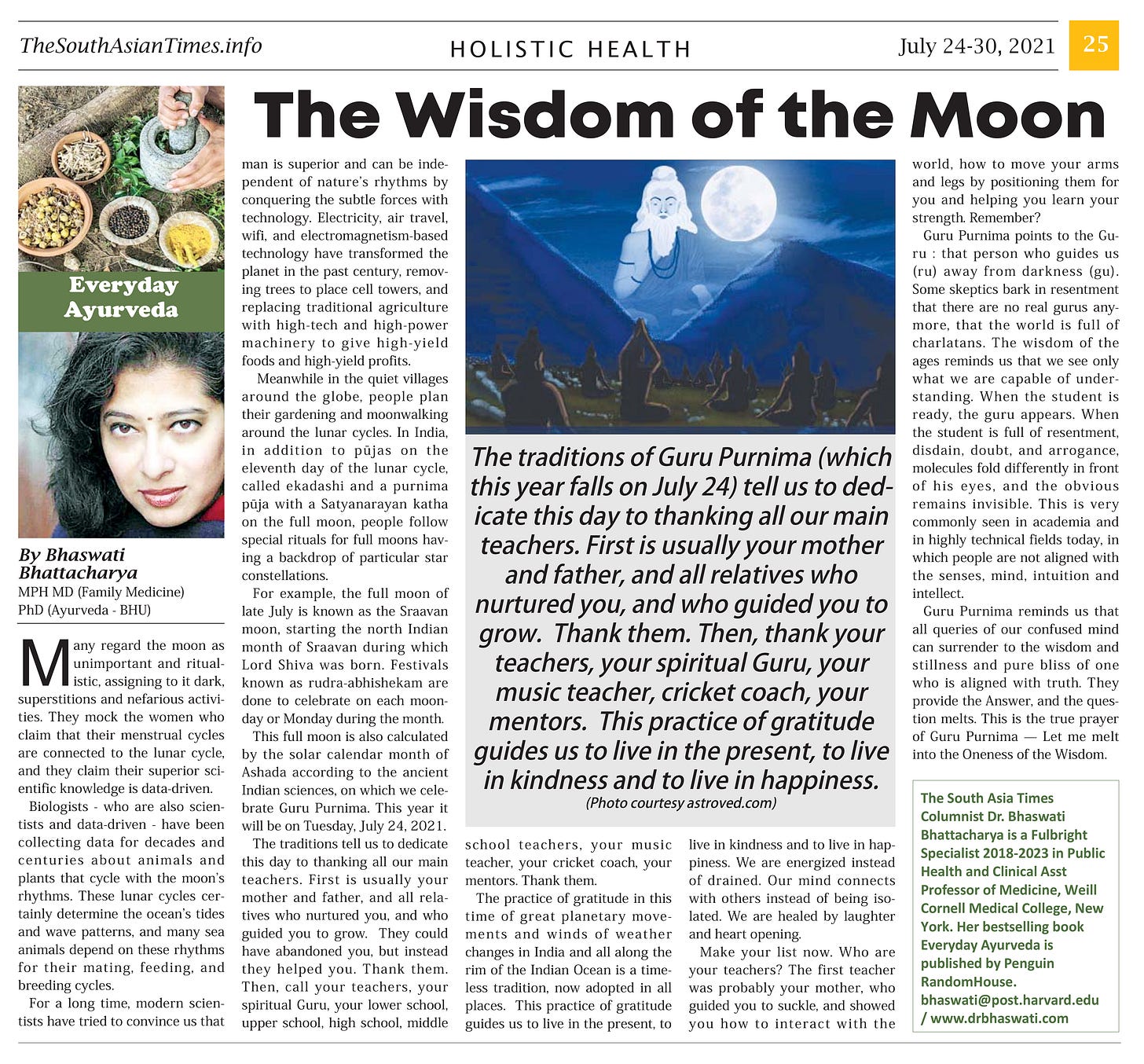The Wisdom of the Moon
Many regard the moon as unimportant and ritualistic, assigning to it dark superstitions and nefarious activities. They mock the women who claim that their menstrual cycles are connected to the lunar cycle, and they claim their superior scientific knowledge is data-driven.
Biologists - who are also scientists and data-driven - have been collecting data for decades and centuries about animals and plants that cycle with the moon’s rhythms. These lunar cycles certainly determine the ocean’s tides and wave patterns, and many sea animals depend on these rhythms for their mating, feeding, and breeding cycles.
For a long time, modern scientists have tried to convince us that man is superior and can be independent of nature’s rhythms by conquering the subtle forces with technology. Electricity, air travel, wifi, and electromagnetism-based technology have transformed the planet in the past century, removing trees to place cell towers, and replacing traditional agriculture with high-tech and high-power machinery to give high-yield foods and high-yield profits.
Meanwhile in the quiet villages around the globe, people plan their gardening and moonwalking around the lunar cycles. In India, in addition to pūjas on the eleventh day of the lunar cycle, called ekadashi and a purnima pūja with a Satyanarayan pūja on the full moon, people follow special rituals for full moons having a backdrop of particular star constellations.
Sravan-Ashada-Karkata
For example, the full moon of July is known as the Sraavan moon, starting the north Indian month of Sraavan during which Lord Shiva was born. Festivals known as rudra-abhishekam are done to celebrate on each moon-day or Monday during the month. This full moon cycles between June-July-August, depending on the year, as the solar and lunar cycles vary and are reconciled every 5 years. The stars in the night sky during Aashaḍa correspond to the constellations of Cancer/Leo.
The ancient calendars tried to calculate variations and found the best correlation with the Indian science of wise agriculture — vrikksha ayurveda — that knew this full moon welcomed the monsoon. It is also the birthday of the wiseman Ved Vyasa, who formed the 4 Vedas as the collection of wisdom about the universe and man’s place in it.
Guru Purnima
This full moon celebrates wisdom and is calculated by the solar calendar month of Aashaḍa. on which we celebrate Guru Purnima. This year it will begin in the mid-morning of Friday July 23, 2021, and be celebrated as Guru Purnima at sunrise on Saturday, July 24, 2021.
The traditions tell us to dedicate this day to thanking all our main teachers. First is usually your mother and father, and all relatives who nurtured you, and who guided you to grow. They could have abandoned you, but instead they helped you. Thank them. Then, call your teachers, your spiritual Guru, your lower school, upper school, high school, middle school teachers, your music teacher, your cricket coach, your mentors. Thank them.
The practice of gratitude in this time of great planetary movements and winds of weather changes in India and all along the rim of the Indian Ocean is a timeless tradition, now adopted in all places. This practice of gratitude guides us to live in the present, to live in kindness and to live in happiness. We are energized instead of drained. Our mind connects with others instead of being isolated. We are healed by laughter and heart opening.
Make your list now. Who are your teachers? The first teacher was probably your mother, who guided you to suckle, and showed you how to interact with the world, how to move your arms and legs by positioning them for you and helping you learn your strength. Remember?
Guru Purnima points to the Gu-ru : that person who guides us (ru) away from darkness (gu). Some skeptics bark in resentment that there are no real gurus anymore, that the world is full of charlatans. The wisdom of the ages reminds us that we see only what we are capable of understanding. When the student is ready, the guru appears. When the student is full of resentment, disdain, doubt, and arrogance, molecules fold differently is front of his eyes, and the obvious remains invisible. This is very commonly seen in academia and in highly technical fields today, in which people are not aligned with the senses, mind, intuition and intellect.
Guru Purnima reminds us that all queries of our confused mind can surrender to the wisdom and stillness and pure bliss of one who is aligned with truth. They provide the Answer, and the question melts. This is the true prayer of Gurupurnima — Let me melt into the Oneness of the wisdom.
week 69. TheSouthAsianTimes
Download the .pdf version of this column by clicking on the image.
Dr. Bhaswati Bhattacharya is a Fulbright Specialist 2018‐2023 in Public Health. She serves as Clinical Asst Professor of Family Medicine in the Department of Medicine at Weill Cornell Medical College in New York, NY.
Her bestselling book Everyday Ayurveda is published by Penguin Random House. To order an autographed copy, write to bhaswati@post.harvard.edu.
www.drbhaswati.com





